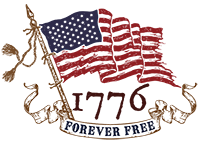Hi, my name is Mike and I’m fascinated by the study of personal liberty, and the appurtenant personal responsibilities. All humans have a right to liberty, and a duty to live up to the responsibilities to understand, study, and protect freedom for all. The Nation’s Founders gifted us the chance to live in liberty, and tasked us with its upkeep. I have not done my best in the past but my goal is to do what I can in the name of freedom and love for all humankind. Of particular interest to me is how to enshrine Liberty as technology evolves.
As a professional pilot, I try to keep abreast of current issues and events in aviation. Recently, the FAA has approved certain unmanned aerial vehicles (Drones) for BVLOS, or Beyond Visual Line of Sight. Prior to this, eCFR 14 Section 107 required all drone operators to maintain visual contact with their drones. Operators such as Amazon, FedEx, and UPS have been studying how to use BVLOS in local package delivery. The technological hurdle to be crossed was how to detect collision threats. A new acoustic technology for Detect and Avoid operations was just approved in January, 2021.
The Scout System by American Robotics uses ground and air based microphones to detect collision threats.
https://www.american-robotics.
Currently they are marketing towards agricultural, industrial, and utilities applications, but the scope in the future is much broader.SARA, or the Scientific Applications and Research Associates, outlays a similar acoustic Detect and Avoid technology, but for far more activities, including package delivery via drone.
Currently they are marketing towards agricultural, industrial, and utilities applications, but the scope in the future is much broader.SARA, or the Scientific Applications and Research Associates, outlays a similar acoustic Detect and Avoid technology, but for far more activities, including package delivery via drone.
Amazon has been exploring many ideas and patents that could combine the technologies cited above, which include autonomous hives for delivery drones to operate from, ways to use visual data collected from the client’s house and neighboring homes to deliver pertinent product advertisements, and for charging stations on neighborhood fixtures such as lampposts.
https://dronecenter.bard.edu/
The future privacy issues are numerous, and as this is a nascent technology, the Fourth Amendment Case precedent with drone and drone operators are scant, if any.
http://jlsp.law.columbia.edu/
CALL TO ACTION:
I would ask that anyone who is concerned with this to first look through the material in the links. The FAA is primarily concerned about safety, and the agency does not get very involved with privacy concerns. This very well may depend on State and local regulations. The first step I would recommend is to find any drone use regulations, if any, in our respective states. The second step is to contact our local Planning and Zoning personnel and ask if there is any local guidance for drone usage, and for the ground based acoustic detection/charging/control systems described above. My hope is to raise awareness to the privacy concerns as early as possible. Please share any responses you receive, as this will help us all.
If anyone has a legal background and is willing to do further research with me on the privacy issues that may arise from proliferation of drone usage, please reach out.



